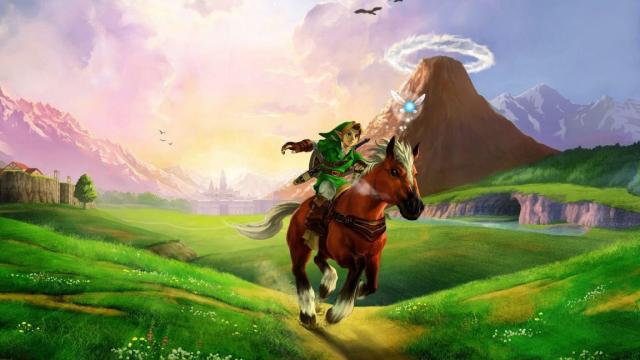A new video by games history and trivia channel Did You Know Gaming? has spotlit a clutch of information on games produced for the Nintendo 64, pulled from hard-to-find video game magazines of the era. The information came from numerous (now classic) Japanese gaming magazines, which might explain why many of the stories never found their way to the West.
The interviews cover the development of games like The Legend of Zelda: Ocarina of Time and Pokemon Snap. The headline interview is a surprisingly candid chat with Shigeru Miyamoto about his involvement on Ocarina of Time, how he came to be directly involved in its development, and a few of the features the game lost on its way to its November 21, 1998 release date.
Here are just a few of the more interesting bullet points from a January 1999 issue of 64Dream magazine:
- Ocarina was supposed to be completed in two years, but dragged on long enough that Miyamoto had to join the team in 1997 to help complete a demo for Spaceworld.
- Kaepora Gaebora (Link’s giant owl friend with the dialogue you always skipped) was originally going to have a split personality. When asked why he’d ordered Kaepora’s split personalities cut, Miyamoto was frank, saying they wouldn’t have been able to ship before Christmas if they’d pursued it.
- Nintendo didn’t feel confident that the game’s titular Ocarina was fun to play for a long, long time. Some initial concerns were that it would annoy players too much or that it should be replaced with an auto-play system. As development continued, these fears dissolved. It was fun, and they knew it.
- Lon Lon Ranch was one of Miyamoto’s responsibilities, and he worked on quite a few of the assets found there, including Talon and Ingo. If you’ve ever thought Talon and Ingo looked a bit like Mario and Luigi, that’s because they do. When Miyamoto first created the characters, the team teased him for having “just made Mario and Luigi again.” Miyamoto responded to this friendly mockery by doubling down and making them look way more like Mario and Luigi than they had before.
- Miyamoto originally wanted Ingo to become deranged and burn Lon Lon Ranch down, a sequence that would have involved Link opening the gates to free the ranch’s trapped horses, scooping Malon into his arms, and escaping on Epona while the ranch burned. An epic moment, certainly, but it created problems for both the game’s story and the N64 hardware. “People asked me ‘What happens if you go back to the ranch later?’ or ‘Can you get that many horses to move all together?’ And so, I had to give up.”
- All of the game’s Deku Scrubs were originally one character named Hobbit (yep), who would have told Link stories and sold items. When the team found themselves running out of time during development, Hobbit was cut and became the Deku Scrubs we know today.
- Ocarina‘s day/night cycle was a big selling point in 1998, but there was originally going to be another component — the game was originally planned to count the number of days it took you to save Hyrule and show you the number at the end of the game. Miyamoto had wanted a post credits screen to read The End, following by “It’s been xxx days since leaving Kokiri Forest. Link’s adventures are at and end for now.” With launch looming, he was forbidden by Nintendo from changing the game’s systems any further, and the idea was dropped.
The video contains many other interesting facts about games from the Nintendo 64 era, including Pokemon Snap, Mario Golf and Mario Tennis, all of which are great and contain a fantastic story about Charles Martinet doing the absolute most in the VO booth.
I love this stuff, and I’m glad the team at DYKG was able to uncover these old interviews and stories. Please tell me more of your favourite video game trivia in the comments.

Leave a Reply